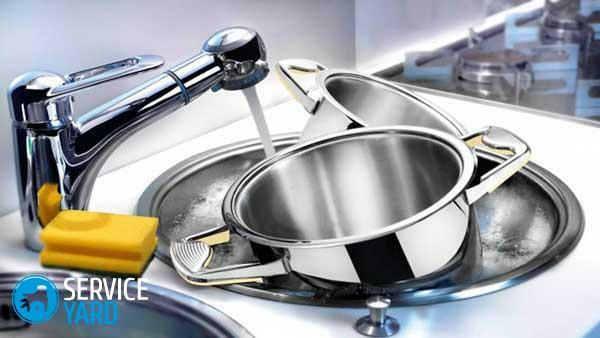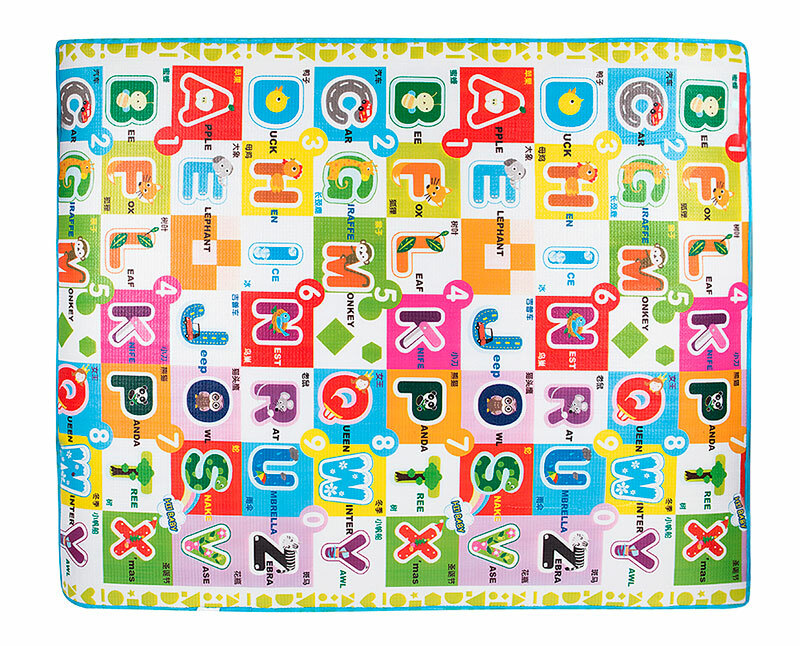
- Why is it necessary to clean stainless steel utensils in time?
- Important tips for the care of metal utensils:
- Than carefully clean stainless steel utensils?
- Useful recommendations:
More and more often in every kitchen you can find stainless steel dishes. The reason is simple: not only is the material profitable and beautiful looking, but also practical, durable, and long-lasting. However, such kitchen utensils require special care, since on a smooth shiny surface any stains or dirt appearing during operation are very noticeable. For stainless steel pots to serve you for a long time, while looking like new, you need to carefully monitor them. How to clean stainless steel utensils at home outside and inside correctly and effectively, find out from our article.
to the contents ↑Why is it necessary to clean stainless steel utensils in time?
The durability and strength of stainless steel provides a special film of chromium oxide, which is formed on pots and other kitchen metal utensils as a result of interaction with oxygen.
This natural process can break up contamination, food residue, grease stains if you do not clean the dishes at home in a timely manner. Otherwise - pans can very quickly lose marketability, as contaminated metal becomes more vulnerable to corrosion, rust, hard to remove traces.
To prevent this from happening, read our tips that will help to keep your dishes clean and cost-effective and extend the life of your dishes.
to the contents ↑Important tips for the care of metal utensils:
- Timeliness of cleaning. About this we have already said above - regular and timely care will allow you for a long time to receive not only aesthetic pleasure from beautiful shining saucepans in your kitchen, but also practical benefits.
- Use of special detergents. The appearance of stains on the surface of pots can be prevented by regularly washing the utensils with water using a detergent and a soft sponge.
- Discarding the dishwasher. Despite the fact that stainless steel dishes can be washed in a dishwasher, we advise you not to do this. By opting out of its services, you can significantly extend the life of the pots.
- "No" to metal scrapers, hard jaws, abrasive cleansers. If you decide how to clean pots at home from stale spots, do not resort to the above methods. They can cope with the task, but leave a scratch on the smooth surface, microcracks, which will lead to damage to the utensils. To wash out old spots better gradually, by soaking or other delicate means, which we will talk about below.
- Use of a towel. To prevent new unnecessary stains on the already washed dishes after cleaning, wipe it dry with a soft towel.
- Attention to the drops. Do not leave water drops on a clean container. Due to the content in the water of various minerals, salts, the dishes will be exposed to their effects. By reacting with the surface, these substances destroy it in the same way as particles of fat, other contaminants.
- Only point impact. Wipe the dishes, do not make circular motions. Impact pointwise is a more delicate way to achieve the maximum smoothness, gloss of your pans.
Than to carefully clean stainless steel dishes?
If you have wondered how to clean stainless steel dishes at home carefully and at the same time efficiently, consider a few simple and inexpensive ways and means.
Cleaning saucepans from stainless steel baking soda
Very common and decades-proven budget method.
Important! Baking soda has an excellent bleaching, disinfecting effect, and also removes stains from fat.
Before removing contaminants with soda, rinse well and thoroughly wipe the dishes with a dry towel. Next, pour the soda on the contaminated surfaces, slightly moistened with water, and leave for 2-3 hours. In conclusion, remove the soda with a soft dry cloth.
Your pans shine again!
Use of special detergents for cleaning metal dishes
If you are thinking how to clean metal utensils, without resorting to any specific methods, use any means designed for washing dishes.
Important! When choosing a product, pay attention to its composition. It should be as soft, delicate, while coping with the main task - removing stubborn stains from the deposit.
Before use, hold the saucepan in boiling water. Spread the gel on the area of contamination, leave it there for 15-20 minutes. At the end of this time, rinse the surfaces with water, wipe them with a dry soft towel.
Glass cleaner for stainless steel utensils
The glass liquid is well suited for removing fingerprints from smooth metal surfaces and also to prevent their appearance. The distribution of the product on the pan cover provides them with a protective film.
Important! To form the film after spraying the liquid, wipe the utensils with a soft cloth. Then you should rinse the dishes with running water and polish with a towel.
Heating as a way to clean stainless steel cookware
How to clean a burnt pan of stainless steel inside of a carbon deposit if soda and detergents did not help?
For extremely resistant stains:
- Heat the soiled pan by filling it with water.
Important! Water should fill the places that need to be cleaned of stains and deposits.
- After boiling, turn off the cooker, add 2-3 tablespoons of salt to the water and leave for a few hours.
Important! Salt should be added only to boiling water, since in cold water it enters an unnecessary reaction with the metal.
- After draining the water, rub the stains with a soft sponge, rinse the dishes and wipe dry with a towel.
Cleaning stainless steel pots with activated charcoal
How to clean stainless steel pots at home outside of carbon deposits and runaway milk? Answer look in the home medicine cabinet. As a cleanser, we suggest using activated charcoal:
- Pound the tablets into powder and rub them with stains on the dishes.
- Then soak the pan for 20 minutes with water.
- Rinse the utensils with running water, dry with a soft cloth.

Using lemon juice and vinegar to clean metal utensils
Both means - vinegar and lemon juice, have similar properties. They form a protective film on the dishes, not allowing further on it to settle all kinds of contaminants and drops of water:
- For cleaning with vinegar, apply it to a sponge and wipe the surface. After the procedure is complete, rinse the pan with water and dry it inside and out.
Important! To get the best effect, we recommend to soak the utensils in the vinegar solution for 15-20 minutes, followed by washing the dishes with running water.
- If you chose lemon juice as the cleanser, dilute a tablespoon of the latter in a glass of water. Then wipe the dishes with this solution, rinse with water, and your pans and pans will shine again.
Soda in combination with office glue is a great way to clean surfaces from stainless
How to boil pans and easily get rid of scum? Here you will be helped by a solution of soda, clerical glue and water:
- Take a large container, which will fit well the contaminated dishes.
- Pour 5 liters of water into it and add half of the baking soda pack. Adhesive is needed in the amount of 100 ml. It is also poured into the resulting solution.
Important! To get the best result, we recommend adding detergent to this mixture.
- Boil the utensils in the resulting solution for 20-30 minutes.
- In the end, also rinse with running water and wipe dry with a cloth.
Cleaning of metal utensils with coffee grounds
Than to clean stainless utensils to return to it shine and shine? Try to take the coffee grounds and wipe the kitchen utensils with a soft sponge.
Important! With the help of such a detergent, rinse all objects with water and wipe with a towel. Spoons, forks and pans will look like new.
Use of liquid ammonia to clean kitchen utensils
To make the saucepans special shine, you can make a solution with ammonia, adding 5 drops of the latter in one liter of water. After processing the resulting composition, the dishes will sparkle, as in the shop window.
Important! To enhance the effect, mix sponge with ammonia and toothpaste on the sponge, wipe the pan, rinse with water and wipe dry with a soft cloth.
to the contents ↑Useful tips:
- To avoid damaging pots and pans made of stainless steel during cooking, use special blades instead of forks and spoons.
- You can use raw potatoes to brighten the metallic dishes. To do this, wipe the metal surfaces with fresh cut potato tubers.
- To prevent rust and stubborn stains from appearing on the metal, wash the utensils immediately after cooking until it has stuck to the surface.
If you follow our recommendations, cleaning the dishes at home will no longer seem particularly difficult for you. Thanks to affordable and inexpensive tools for the care of metal utensils, which we recommend, it will serve a long time, pleasing you with quality cooked food. Shine and shine your dishes!



